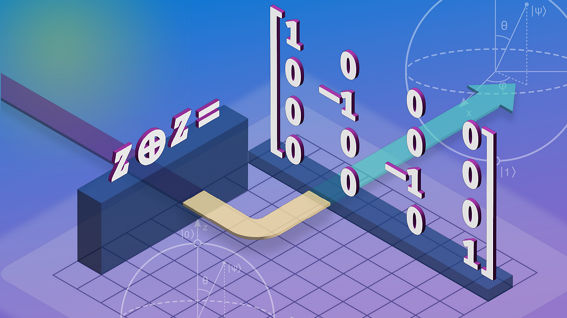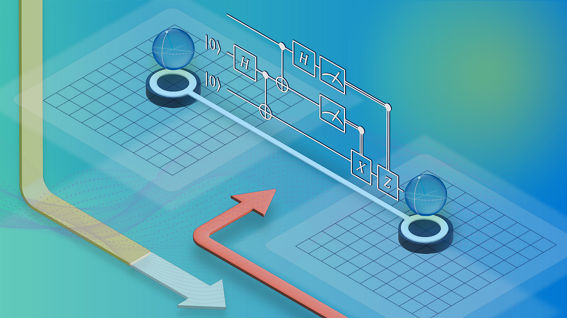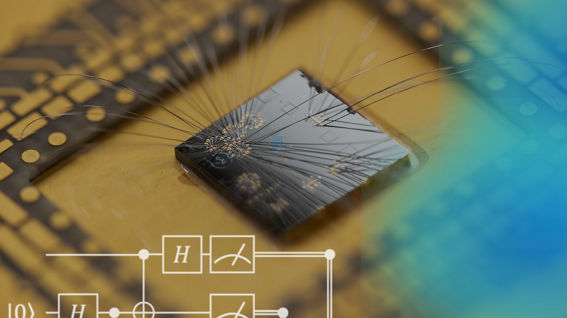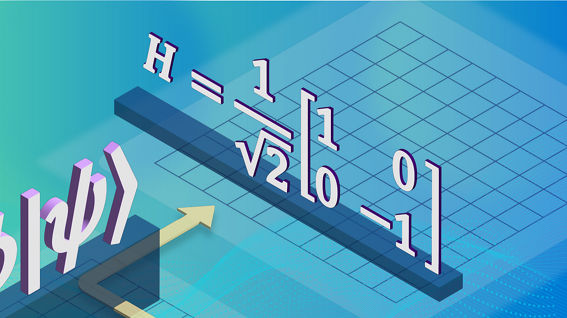Analogous to logical gates in classical computing, single-qubit gates act on individual qubits, modifying their quantum states. There are several commonly used single-qubit gates in quantum computing, each with a different effect on the qubit state. Single-qubit gates are important because they form the building blocks for constructing more complex quantum circuits. By combining different single-qubit gates in specific ways, we can create complex quantum operations that can be used for a variety of applications.

- X gate: This gate is analogous to the NOT gate in classical computing. It flips the state of the qubit from |0⟩ to |1⟩ or from |1⟩ to |0⟩.
- Z gate: This gate flips the phase of the |1⟩ state, leaving the |0⟩ state unchanged.
- Y gate: This gate is equivalent to applying both X and Z gates and a global phase.
- Hadamard gate: This gate creates a superposition state by transforming the |0⟩ state into an equal superposition of the |0⟩ and |1⟩ states.
- S gate: This gate is a 90-degree phase shift gate that introduces a phase shift of π/2 radians to the |1⟩ state.
- Arbitrary rotation gates: Arbitrary rotation gates are a class of single-qubit gates that allow for arbitrary rotations around the three axes of the Bloch sphere (see definition of a Bloch sphere below). There are three arbitrary rotation gates in quantum computing: Rx(θ), Ry(θ), and Rz(θ). These gates are sometimes referred to as single-qubit rotation gates, or simply rotation gates.
- T gate: This gate is a 45-degree phase shift gate that introduces a phase shift of π/4 radians to the |1⟩ state.
Bloch sphere
Another way to understand the effect of single-qubit gates is to use the Bloch sphere. The Bloch sphere is a 3D sphere that represents the possible states of a qubit, with the north and south poles of the sphere corresponding to the |0⟩ and |1⟩ states, respectively. All other points on the surface of the sphere represent superposition states, which are linear combinations of the |0⟩ and |1⟩ states.
By representing quantum states as points on the sphere, it is possible to visualize the effects of quantum operations on those states. For example, applying a Hadamard gate to a qubit in the |0⟩ state causes the qubit to move from the north pole of the sphere to the equator, which represents an equal superposition of |0⟩ and |1⟩ states. Similarly, applying an X-gate to a qubit in the |0⟩ state causes the qubit to move from the north pole to the south pole, which represents a flip of the qubit state from |0⟩ to |1 .
Another way to understand the effect of single-qubit gates is to use the Bloch sphere. The Bloch sphere is a 3D sphere that represents the possible states of a qubit, with the north and south poles of the sphere corresponding to the |0⟩ and |1⟩ states, respectively. All other points on the surface of the sphere represent superposition states, which are linear combinations of the |0⟩ and |1⟩ states.
By representing quantum states as points on the sphere, it is possible to visualize the effects of quantum operations on those states. For example, applying a Hadamard gate to a qubit in the |0⟩ state causes the qubit to move from the north pole of the sphere to the equator, which represents an equal superposition of |0⟩ and |1⟩ states. Similarly, applying an X-gate to a qubit in the |0⟩ state causes the qubit to move from the north pole to the south pole, which represents a flip of the qubit state from |0⟩ to |1⟩ .
Pauli gates
Named after physicist Wolfgang Pauli, the Pauli gates are the X gate, Y gate, and Z gate. Pauli gates perform a rotation of 180 degrees around the X, Y, and Z axes of the Bloch sphere, respectively. When a Pauli gate is applied to a qubit, the state of the qubit is rotated around the corresponding axis of the Bloch sphere. For example, the X gate is also known as the NOT gate and corresponds to a rotation of 180 degrees around the X axis. If a qubit is initially in the state |0⟩, applying the X gate will result in the state |1⟩, and vice versa. The Y and Z gates work similarly but correspond to rotations around the Y and Z axes of the Bloch sphere, respectively. The Y gate performs a rotation of 180 degrees around the Y axis, and the Pauli Z gate performs a rotation of 180 degrees around the Z axis. These gates are important for manipulating the phase of a qubit, which is essential for many quantum algorithms.
The Pauli gates are important in quantum computing for several reasons. First, they are essential for manipulating quantum states, and are used in many quantum algorithms. For example, the X gate is often used as the basic building block for quantum circuits, and the Y and Z gates are important for performing phase shifts and other manipulations of quantum states. In addition to their importance in quantum algorithms, the Pauli gates are also essential for quantum error correction. Errors in quantum states typically correspond to deviations from the Pauli group, which means that the ability to manipulate states within the Pauli group is important for detecting and correcting errors.





